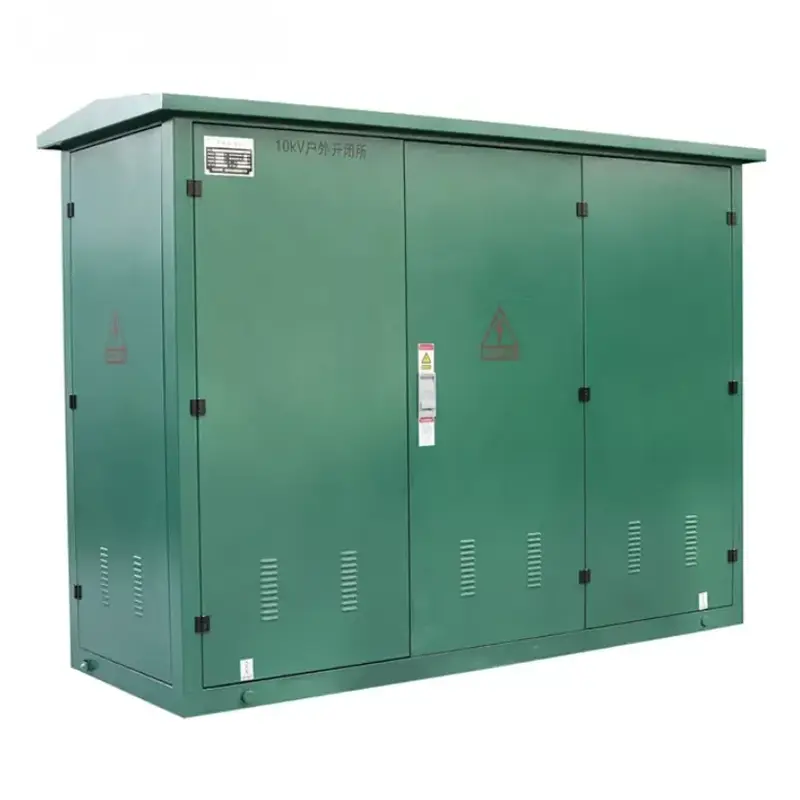What Are the Technical Specifications to Consider When Selecting a Box Type Substation
2025-11-25
As someone who has spent over two decades in the electrical infrastructure sector, I’ve seen countless projects succeed or stumble based on one critical decision: the selection of the right Box Type Substation. It’s the silent, robust heart of many power distribution networks, and getting its technical specs wrong can lead to endless headaches. From my experience, a deep dive into the specifications upfront saves immense time and capital down the line. That’s why I’ve always advocated for a meticulous, data-driven approach, much like the engineering philosophy we embody at TOONICE.
What Key Electrical Parameters Must You Absolutely Verify
Before anything else, the electrical characteristics define the compatibility and safety of your Box Type Substation. You need to ensure it speaks the same language as your grid. Here are the non-negotiables:
-
Rated Voltage: The maximum operating voltage the system can handle continuously.
-
Rated Frequency: Typically 50Hz or 60Hz, matching your regional grid.
-
Insulation Level: This dictates the substation's ability to withstand lightning and switching overvoltages.
-
Short-Circuit Withstand Current: The maximum current the substation can handle for a short duration during a fault without damage.
For a clearer picture, here’s a typical parameter set for a medium-voltage application:
| Parameter | Typical Specification Range |
|---|---|
| Primary Voltage | 11kV, 22kV, 33kV |
| Secondary Voltage | 415V / 240V |
| Rated Power (kVA) | 160 kVA to 2500 kVA |
| Short-Circuit Current | 25 kA for 3 seconds |
| Frequency | 50 Hz or 60 Hz |
| Insulation Level | 95kV Power Frequency, 125kV Impulse |
Getting these fundamentals right is the first step. At TOONICE, we pre-validate every one of these parameters in our test labs, ensuring our Box Type Substation units arrive on-site ready for a seamless connection.
How Crucial Are the Structural and Environmental Specifications
A Box Type Substation isn't just about what's inside; its external shell is the first line of defense. Ignoring the structural and environmental specs is like buying a high-performance engine and forgetting to put it in a car.
You must consider:
-
Enclosure Material: Is it galvanized steel, aluminum, or perhaps non-metallic? This affects corrosion resistance, weight, and longevity. Our TOONICE enclosures use a triple-layer anti-corrosion coating, a lesson learned from harsh coastal installations.
-
Ingress Protection (IP) Rating: This defines protection against solid objects and liquids. An IP54 rating is common for dust and water splashes, but for flood-prone areas, you might need IP65 or higher.
-
Thermal Management: How does it dissipate heat? Natural ventilation, forced fan cooling, or air conditioning? This is vital for maintaining component life.
-
Dimensions and Footprint: Does it fit your allocated space, including necessary clearances for maintenance and safety?
Which Internal Components Define the True Quality of a Box Type Substation
Peek inside, and you'll see the soul of the unit. The choice of internal components is where premium suppliers separate themselves from the rest. A high-quality Box Type Substation relies on three core internal systems:
-
The MV Switchgear: This is the entry point. Look for reliable brands and proven technologies like SF6 or vacuum circuit breakers. Their maintenance needs and interrupting capacity are critical.
-
The Distribution Transformer: This is the core. Is it oil-immersed or dry-type? What are the no-load and load loss values? Efficiency here directly impacts your operational costs.
-
The LV Switchboard: This is the output. It should be equipped with modern MCCBs (Molded Case Circuit Breakers) and protective devices to ensure safe downstream power distribution.
We at TOONICE don’t compromise on components. We partner with tier-one manufacturers and subject every transformer and circuit breaker to rigorous diagnostic tests. This ensures that every TOONICE Box Type Substation delivers not just power, but peace of mind.
Have You Factored In the Overall Cost of Ownership and Service Support
The initial purchase price is just one part of the equation. The real cost is spread over the substation's entire lifecycle. A cheaper unit with higher losses and frequent maintenance will quickly become a financial burden. Consider the transformer's efficiency class, the durability of the enclosure, and the availability of spare parts. Most importantly, consider the supplier's technical support and service network. Can they provide rapid assistance and have engineers on call?
Selecting the right Box Type Substation is a complex but critical task. It’s about matching hard technical data with real-world operational needs and a partner you can trust for the long haul. I hope this guide, drawn from years of field experience, helps you make a more informed and confident decision.
If you're looking for a partner who understands these intricacies and builds reliability into every product, we are here to help. Contact us today with your specific requirements, and let's discuss how a TOONICE solution can power your project efficiently and safely. We look forward to your inquiry.





